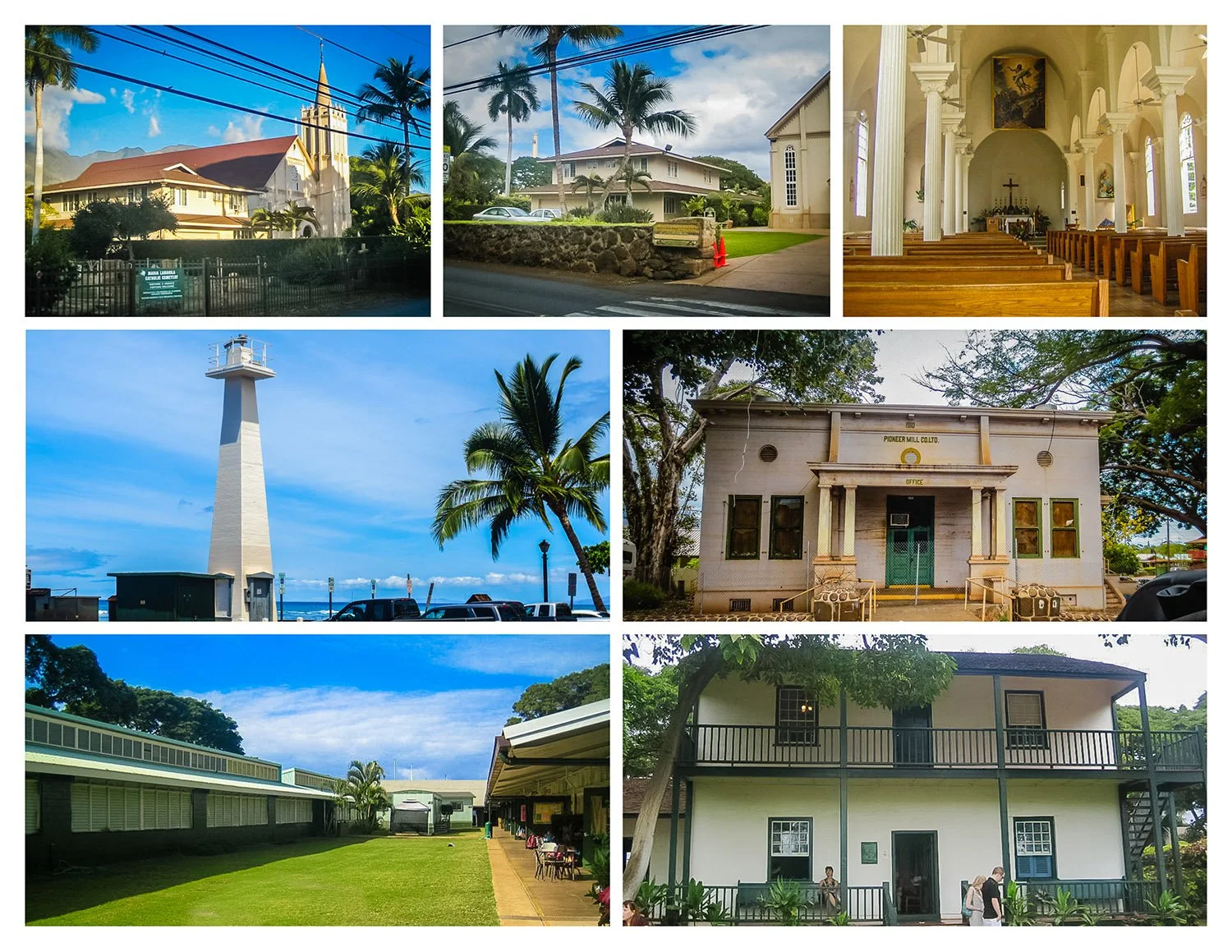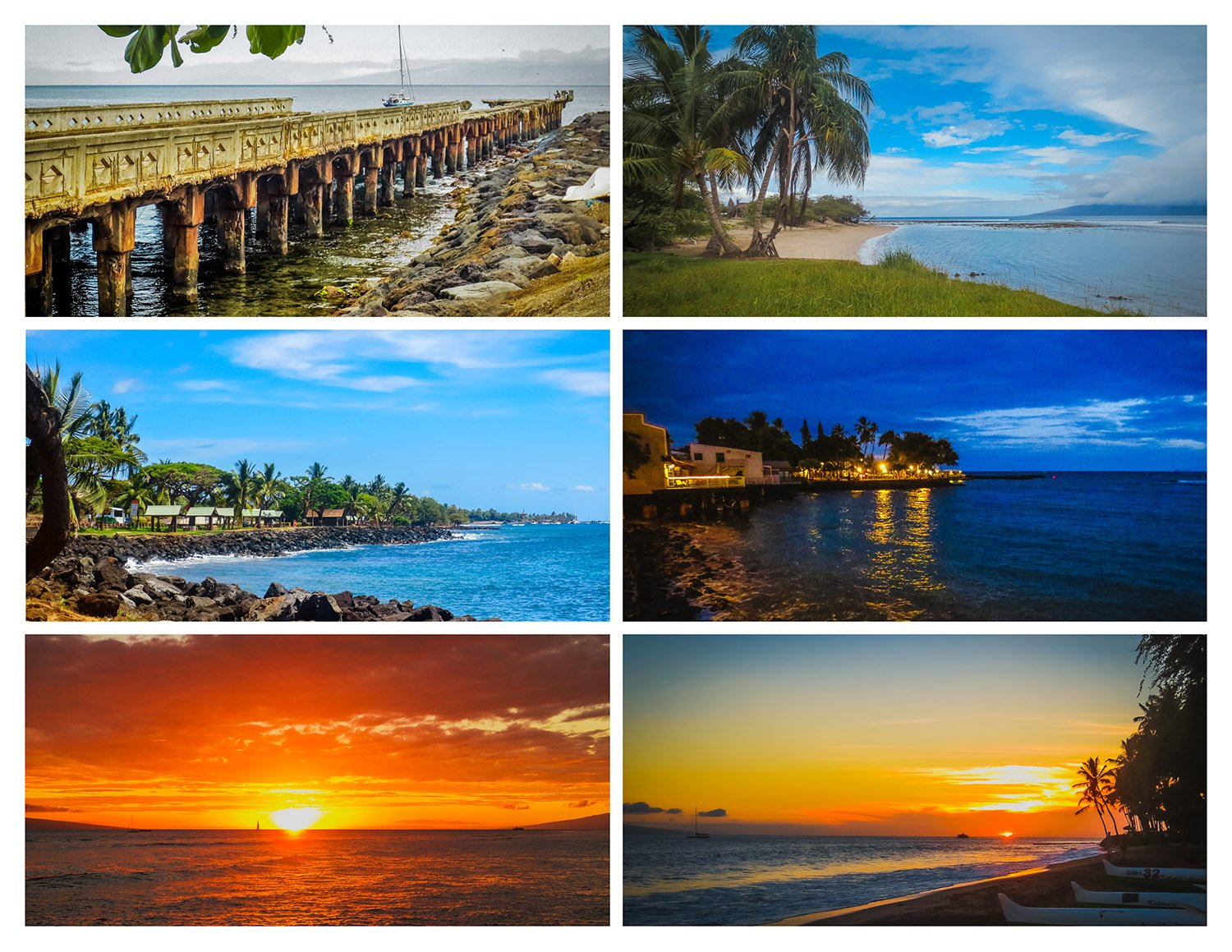Tears for Lahaina
/But to my shock and horror, the Lahaina I had seen on two previous visits has just been razed to the ground by wildfires. It has been three days, but the fire is still not contained. My heart is quite heavy, not only for the lives, property and historical treasures lost, but also because I consider Lahaina to be part of me. I’m grateful, however, that I have managed to put together a book for my family’s reference about my grandparents’ stay in Hawai’i, which book contains photos and stories I’d gathered from several visits to the islands and research I did over a period of ten years.
I grew up knowing only one grandparent, my mother’s mother. By the time I was born, my three other grandparents had died. I know about my maternal grandfather from a couple of old photos and a few bits about him. As for my paternal grandparents, I have not even seen a single photo of them. I didn’t even know their names until I was an adult. My parents weren’t the biggest storytellers, at least not to us, their children. I never thought to ask either, with my concerns and interests always elsewhere. I took more interest only after my mother had died, a good 26 years after my father had, and I found in her baúl (chest) a few documents concerning my father’s family’s stay in Hawai’i and his birth there during their five years in Lahaina. By then, there was no longer anyone alive whom I could ask. And so, when I finally got to travel to Hawai’i, I tried to learn as much as I could about my paternal roots by visiting museums, libraries and contacting historical societies and the like.
Lahaina is Hawai’ian for cruel sun, and its being hot and dry apparently contributed to how easily it was eaten up by a wildfire. It was a small fishing village before it was chosen by King Kamehameha II as the royal capital in 1820, just around the time when New England whalers discovered Hawai’i as a good stop for food and supplies. It was also that year when the first Protestant missionaries from New England arrived on the islands. For the next 50 years, there was a whaling boom to supply a great demand for whale oil for heating, lamps and machinery. Whale bone was also used for corsets, skirt hoops, umbrellas, and buggy whips. Lahaina became the favorite harbor for whalers who would stay in town for a few days to get some rest and recreation. With the discovery of other types of oil, the whaling industry declined in the late 1800s. But Lahaina, as well as the rest of Hawai’i, soon saw the growth and eventual boom of the sugar industry. Pioneer Mill in Lahaina was the sugar king in Maui for 139 years, closing only in 1999. Before the present wildfires, Lahaina was thriving as a touristy town.
Lahaina is a narrow strip of land trapped between the sea and the slopes of West Maui Mountain. The old town bustled during my previous visits, having morphed into a tourist trap. I closed my eyes to the cheesy parts and pictured how the place might have looked during its earlier days: a town that felt a lot like my home province of Ilocos Norte -- the arid strip of land caught between mountain and sea, the vegetation, the deep blue sky, Ilocano people, Ilocano sounds.
The following photos were taken on my visits to Lahaina in 2012 and 2013 using a pocket digital Canon and my limited photographic know-how. They’re thus not of professional quality, but they’ve suddenly become treasures, at least for me and my family. Lolo Benito, my grandfather, and his family would have seen the 1920s versions of these sites during their stay in Lahaina. Before the fire, most of them were part of the Lahaina Historic Trail, but I’m so afraid that they have become part of the big, smoldering ash heap that now blankets the precious town.
The Banyan Tree (Photos by Odette Foronda)
Planted in 1873, this banyan tree had since grown aerial roots before the fire, 16 of which were rooted in the ground. This one tree covered a good part of one square block next to the Old Lahaina Court and Custom House and across the street from Pioneer Inn. Its post-fire survival is uncertain.
Pioneer Inn (Photos by Odette Foronda)
Pioneer Inn was built in 1901 and for about 50 years was the only hotel in West Maui. Apart from hosting bawdy sailors and other personalities, it has also been the setting of many Hollywood films. Before the fire, it was a working hotel run by Best Western.
Courthouse, Library, Plantation Museum (Photos by Odette Foronda)
Top: Lahaina Court and Custom House and a display at the museum inside. Built in 1859 with the remains of Hale Piula, the unfinished palace of King Kamehameha III, it has served as a customs house, the monarchy’s center of government, courthouse, tax and post office, police station and jail. Before the fire, it served as Lahaina’s Visitor Center and housed the Lahaina Heritage Museum.
Bottom: Lahaina Public Library where I spent many hours; items on display at the Plantation Museum.
Lanakila, Pioneer Mill, Lighthouse, Kam III, Baldwin (Photos by Odette Foronda)
Top row: Maria Lanakila Church and Parish Office, where I found my father’s baptismal record.
Middle row: Lighthouse built in the 1840s, the oldest in Hawai’i; Pioneer Mill Office built in 1910.
Bottom row: King Kamehameha III Elementary School, Baldwin Home Museum from the 1800s.
Pioneer Mill Smokestack (Photos by Odette Foronda)
The Smokestack Restoration Site on Lahainaluna Road, across the street from the Pioneer Mill Office. A Lahaina landmark, the Pioneer Mill smokestack was built in 1928. On this site, the Lahaina Restoration Foundation displayed old locomotives, sugar flumes, rail carts and machinery parts used by Pioneer Mill.
Moku'ula, Railroad, Jail, Wo Hing (Photos by Odette Foronda)
Clockwise from top left: Moku'ula, an ancient sacred site where the royal family held residence, was believed to be axis mundi where cosmic power emanated. There used to be a pond here, which dried up when the plantations diverted the water to the sugar cane fields; Chinese Wo Hing Temple from the early 1900s; a cell in the Hale Pa’ahao jail from the 1850s; Pioneer Mill railroad, where the sugar trains ran, was close to the Filipino Camp.
Wharf and Coast (Photos by Odette Foronda)
Top row: Mala Wharf, where sacks of sugar were loaded onto ships from the 1920s; Baby Beach, the one closest to Filipino Camp.
Middle and bottom rows: Lahaina’s coast
From the ashes, Lahaina will rise, but it will have a new face. It won’t be next year, but when I finally bring my family to Maui, I’ll take them to the places where our ancestors might have trod even as I know that the very buildings they’d been to will no longer stand there. Certainly, we’ll swim at the beaches until we’re sunburned to a crisp and watch the big waves on Makena. Maybe we’ll drive the Road to Hana and check out I’ao Valley. But apart from Lahaina, the great, dormant Haleakala will be high on my priority list. Hoping, that is, that it will not have made its last eruption by then and totally changed the landscape.
Haleakala last erupted in 1790 and experts are expecting one last eruption. Haleakala means house of the sun. Apt name, for the sun puts on unique, astounding shows here, with the biggest hits around the hours around sunrise and sunset. It takes some work to get there, but the sights will leave you with no words but sheer awe and gratitude to the One who painted all the jaw-dropping magic.
Haleakala Sunrise (Photos by Odette Foronda)
Top to bottom: Haleakala summit at daybreak, sunrise, and cinder cones on the crater floor.
Heleakala Akaku Anuenue and Silversword (Photos by Odette Foronda)
Haleakala before sunset. Top and bottom left: The akaku anuenue or Specter of the Brocken, which the ancient Hawai’ians believed was a glimpse of one’s soul. Just before the sun sets, if you stand on a ridge with the sun directly at your back and there’s a cloud below and in front of you, look for your shadow on the cloud. You should find it surrounded by a rainbow halo: your very own akaku anuenue.
Bottom, middle and right: The highly-endangered ‘ahinahina or silversword plant can be found only on the summits of Haleakala and Mauna Kea. It lives for 15 to 40 years until it blooms. Once a branch has flowered, it dies. The main plant lives until the last branch has bloomed.
Haleakala Sunset (Photos by Odette Foronda)
Top to bottom: Haleakala cinder cones an hour before sunset, sunset and moonrise. Sunset and moonrise were photographed three minutes of each other.
Odette Foronda is a mother of four, grandma of two pretty teenage girls and cute twin three-year-old boys, based in Toronto. Now retired from years of working in the numbers field, she’ll travel as far as her Ilocano purse will allow. She has published 11 books of her travel photos and stories (https://www.blurb.com/user/odettef).
More articles from Odette Foronda













